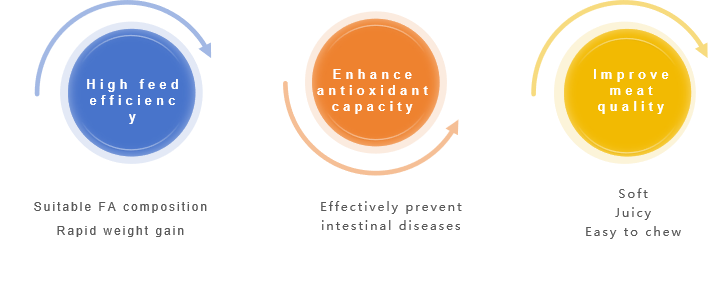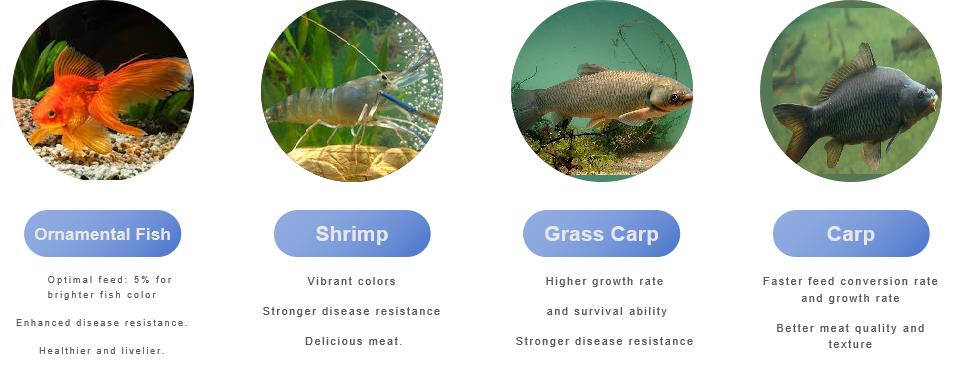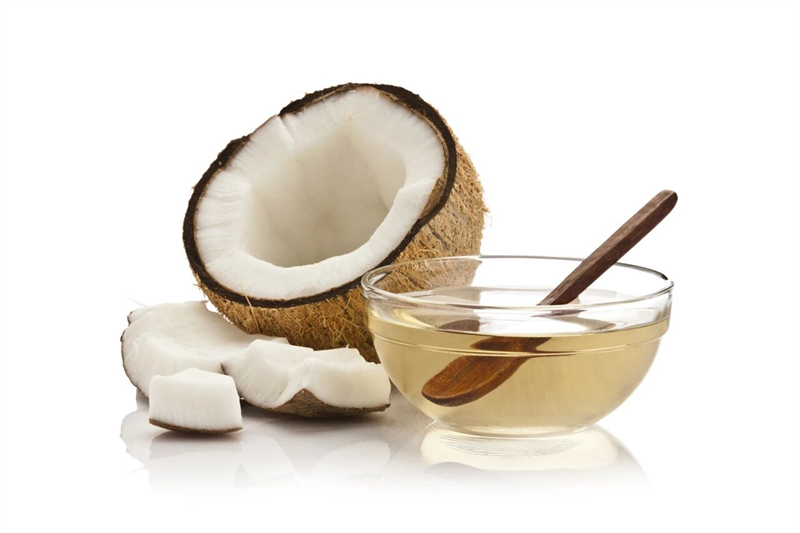
Application of Red Palm Oil - Animal Feed (Pigs, Chickens, Fish, and Parrots)
Red palm oil (RPO) is mainly derived from a special type of palm tree, and its oil is separated from the fruit through a specific low-temperature extraction process.
RPO contains abundant saturated fatty acids, unsaturated fatty acids, and natural antioxidants such as beta-carotene and tocotrienols (vitamin E), which provide excellent nutritional value and antioxidant properties.
Due to its rich nutritional profile, red palm oil has been widely recognized and used in the human food industry. It is also gradually being incorporated into animal feed to improve their nutritional intake.
Application in animal feed:
In agricultural production, RPO is widely used in the production of animal feed, especially in poultry and pig feed, to improve the nutritional level and appetite of the feed.

Effects on animal growth:
RPO can increase energy intake and nutrient absorption in animals, promoting their growth and development, and has a positive impact on meat quality and yield.

Effects in pig feed:
As a natural vegetable oil, RPO not only has rich nutritional value but also many unique advantages. Firstly, it is rich in vitamin E and antioxidants, which can effectively improve the pig’s immunity and protect their health. The fatty acid (FA) composition in red palm oil is also very suitable for pig digestion and absorption, improving feed utilization and reducing waste.

Moreover, RPO has anti-inflammatory and antioxidant effects, which can effectively prevent intestinal diseases in pigs, improving growth rate and feed conversion. This means that by adding red palm oil, we can promote healthier and faster growth in pigs, bringing higher benefits to the breeding industry!
It is important to control the dosage of RPO to ensure optimal results and balance it with other feed ingredients such as corn, soybean, wheat, soybean meal, fish meal, animal fat, and vegetable oil

Effects in parrot feed:
As a natural vegetable oil, RPO not only has rich nutritional value but also has a taste that parrots can’t get enough of.

RPO provides essential nutrition for parrots and can improve their health and appearance. Feathers become brighter and more colorful, without patches or scales, and beaks become smoother.Red palm oil can also alleviate skin itching and prevent parrots from plucking their feathers. Its high content of vitamin E is essential for parrots, as they cannot synthesize it themselves and must obtain it through food intake.

Effects in chicken feed:
Adding RPO to chicken feed has several benefits:
1.Increases the energy density of the feed: improving the growth rate, production efficiency, better meat quality and yolk color.
2.Rich in natural antioxidants and polyunsaturated fatty acids, red palm oil can effectively enhance the nutrient absorption and health of chickens, as well as strengthen their disease resistance.
Studies have found that a proper proportion of RPO in chicken feed can effectively improve the growth rate and production performance of chickens, while also enhancing the nutritional value and taste of chicken meat. The proportion of the oil in chicken feed should consider the type of chicken, age, and growth stage. Typically, the ratio of it in chicken feed is around 2% to 5%, and it should be balanced with other feed ingredients such as protein, carbohydrates, minerals, and vitamins.
Different methods of addition may affect the absorption and utilization of RPO by chickens, thereby impacting their growth and health. It can be directly added to chicken feed or mixed with other feed ingredients before addition. Direct addition can better maintain the nutritional value of the oil. Adding RPO to feed not only reduces feed costs but also improves the health level of chickens. It is a sustainable, economical, and environmentally friendly feed additive.
The effects of RPO vary in different stages of chickens, such as broilers, layers, pullets, and breeders.

Effects in fish feed:
Red palm oil is currently mainly used in fish feed to improve energy value and nutritional balance. It has the following characteristics:
1.Contains rich antioxidants, including beta-carotene and vitamin E, which can improve fish immunity, reduce disease incidence, and enhance aquaculture profitability.
2.good stability in feed and can maintain its nutritional value for a long time without decomposition.
3.Highly absorbed and utilized by fish, it reduces water pollution and contributes to maintaining ecological balance.
The amount of red palm oil added needs to be adjusted according to different types of aquatic products, and the proportion should be balanced with other feed ingredients to ensure nutritional balance and achieve optimal feeding results. To further enhance feed efficiency, the oil can be mixed with other nutrients such as fish meal and soybean meal to meet the comprehensive nutritional needs of aquatic products.
With the rapid development of aquaculture, there is a growing demand for healthy, efficient, and environmentally friendly feed. The application of RPO in feed has great potential.











